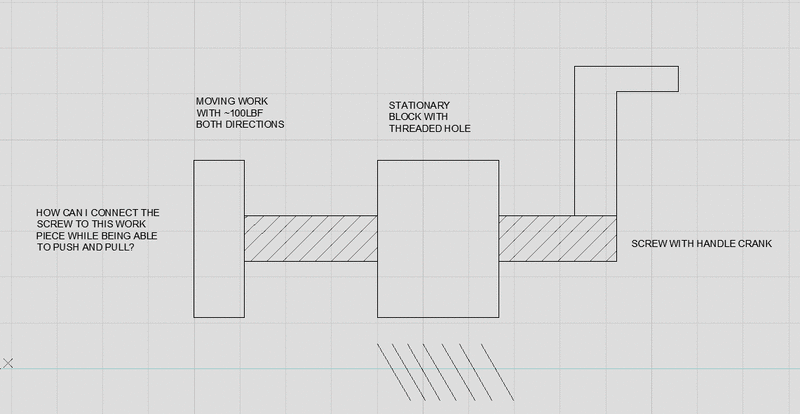Vindicit
Mechanical
- May 24, 2016
- 38
I'm kind of having a brain fart here. I'm trying to design a fixture that can push/pull work by using a long screw + hand crank. The screw is threaded into a stationary block and at the end of the screw is the work piece that needs to move back and forth. What I am having trouble visualizing is how the screw can attach to the work piece by means of some swivel action so the screw just pushes/pulls the piece and doesnt attempt to rotate the work piece while also being capable of pushing/pulling with at least 100 lbf. A normal screw and thread should be able to handle that force but the means of connecting the screw to the work piece is what I cant visualize.




